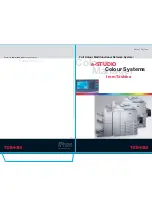
Converting Microsoft Visio files (Windows)
The default Acrobat installation adds the PDFMaker toolbar to Microsoft Visio, which lets
you convert one or more pages in a Visio file to an Adobe PDF file quickly and easily
from within Visio. Adobe PDF files created from Visio files preserve page sizes and
support layers, searchable text, custom properties, links, bookmarks, and comments.
When you convert your Visio file to an Adobe PDF file, you can preserve all or just some
layers, or you can flatten all layers; if you flatten layers, the PDF document will look like
the original drawing, but won't contain any layer information. All shapes in the Visio
drawing are converted, regardless of their protection or behavior, and shape custom
properties can be converted to PDF object data.
Note: Guides are converted only if they are visible in Visio.
To convert a Visio file to an Adobe PDF file:
1. If you want to change the PDF conversion settings, choose Adobe PDF > Change
Conversion Settings in Visio. (For information on the conversion settings, place the
pointer over each option to display a tool tip; for additional information, see
PDFMaker conversion settings (Windows)
2. If you want to convert each page in the Visio file to a bookmarked page in the PDF file,
choose Adobe PDF > Convert All Pages In Drawing. If this option is deselected, only the
current page is converted.
3. Click one of the following buttons in the PDFMaker toolbar to create the PDF file:
●
The Convert To Adobe PDF button
.
●
The Convert To Adobe PDF And EMail button
. The PDF file attaches to a new email
message in your default email application.
●
The Convert To Adobe PDF And Send For Review button
. The file converts to an
Adobe PDF file, and an email-based review process begins. (See
.)
4. If you want to include the custom properties of shapes, select that option.
5. Click Continue.
6. To determine how the Visio layers convert, select one of the following, and click
Continue:
●
Flatten All Layers.
●
Retain All Layers.
●
Retain Some Layers In The Selected Page. The Acrobat PDFMaker dialog box displays a
screen in which you must choose which Visio layers to include in the resulting PDF file.
See
Selecting Visio layers to convert to Adobe PDF layers
7. Click Convert To PDF, choose a location in which to save the resulting PDF file in the
Save In box, type a file name, and click Save.
Related Subtopics:
Summary of Contents for ACROBAT 3D
Page 1: ......
Page 37: ...What s New in Adobe Acrobat 3D New features ...
Page 95: ...Finding Adobe PDF Files Using Organizer Using the Organizer window ...
Page 184: ...FORMS About Adobe PDF forms Setting Forms preferences ...
Page 241: ...Collecting Data from Submitted Forms Collecting form data by email ...
Page 316: ...SECURITY About security Viewing the security settings of an open Adobe PDF document ...
Page 423: ......
Page 508: ...Optimizing Adobe PDF Documents Using PDF Optimizer ...
Page 571: ...SEARCH AND INDEX About searching Adobe PDF documents ...
Page 602: ...PRINT PRODUCTION About print production in Acrobat ...
Page 729: ...SPECIAL FEATURES About document metadata About JavaScript in Acrobat About Digital Editions ...
Page 738: ...Working with JavaScript Working with JavaScript in Acrobat ...
Page 762: ...ADOBE VERSION CUE About Adobe Version Cue Getting help Key features of Adobe Version Cue ...
Page 809: ...Tutorial Version Cue Getting started with Version Cue ...
Page 821: ...Legal Notices Copyright ...
















































